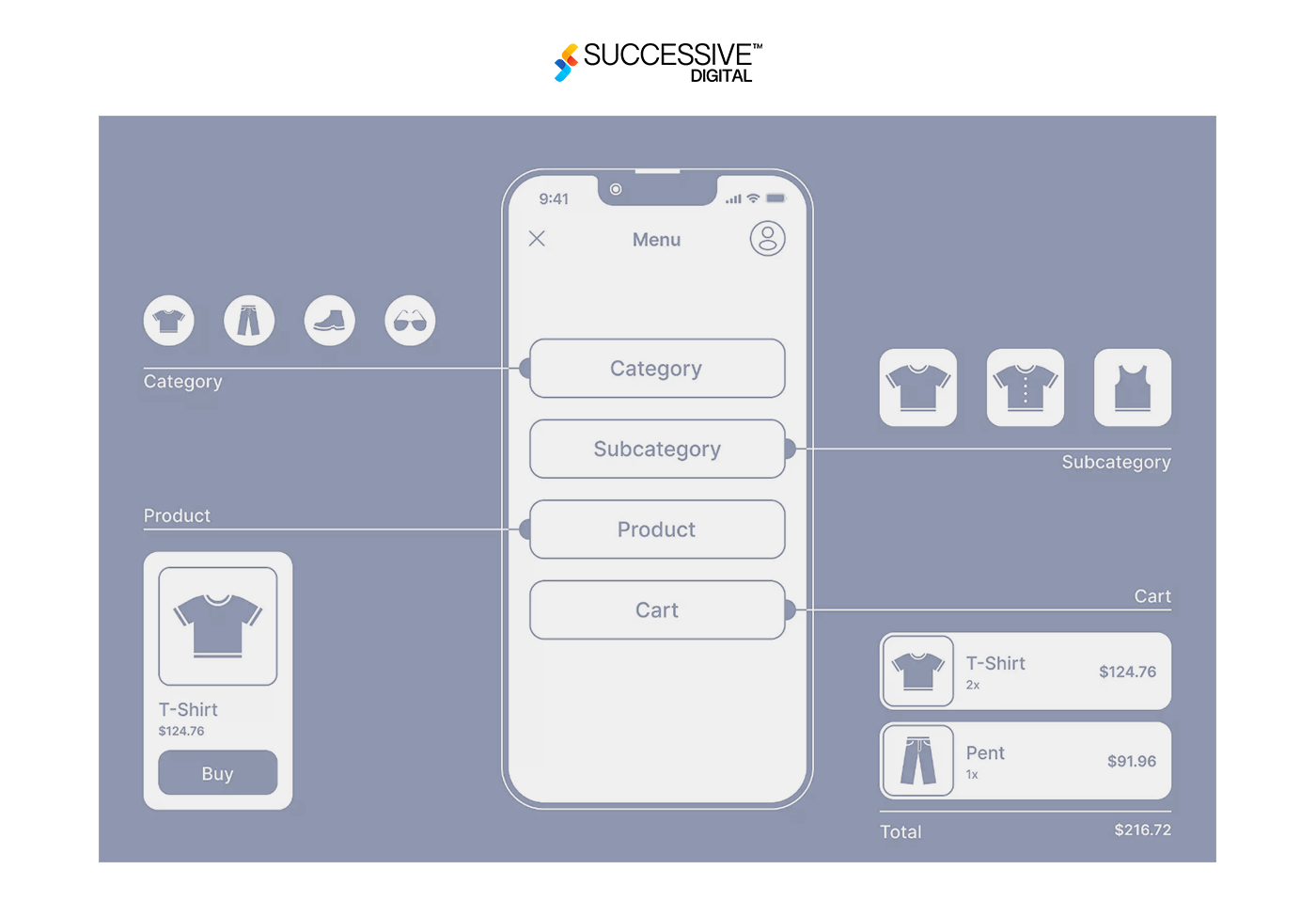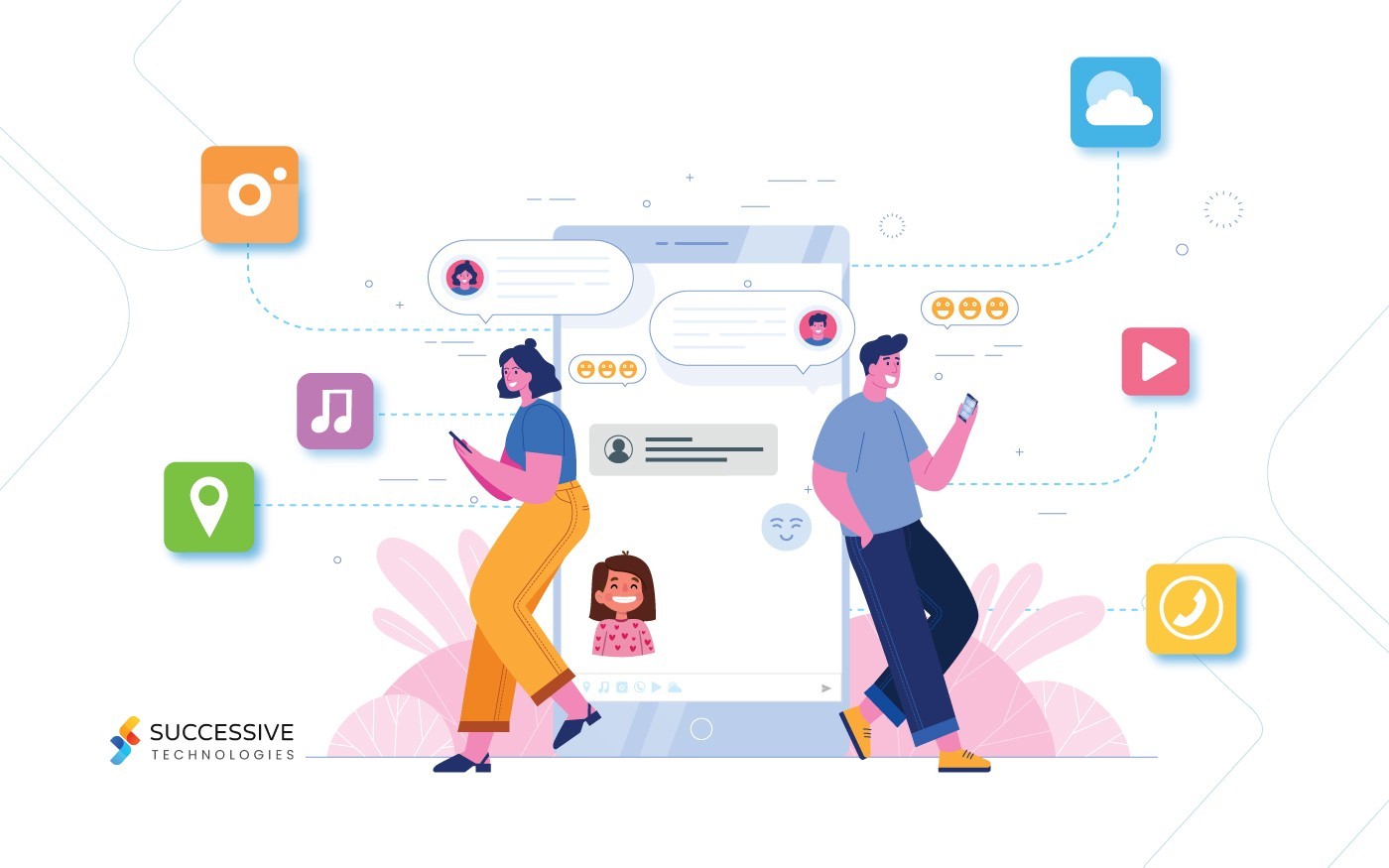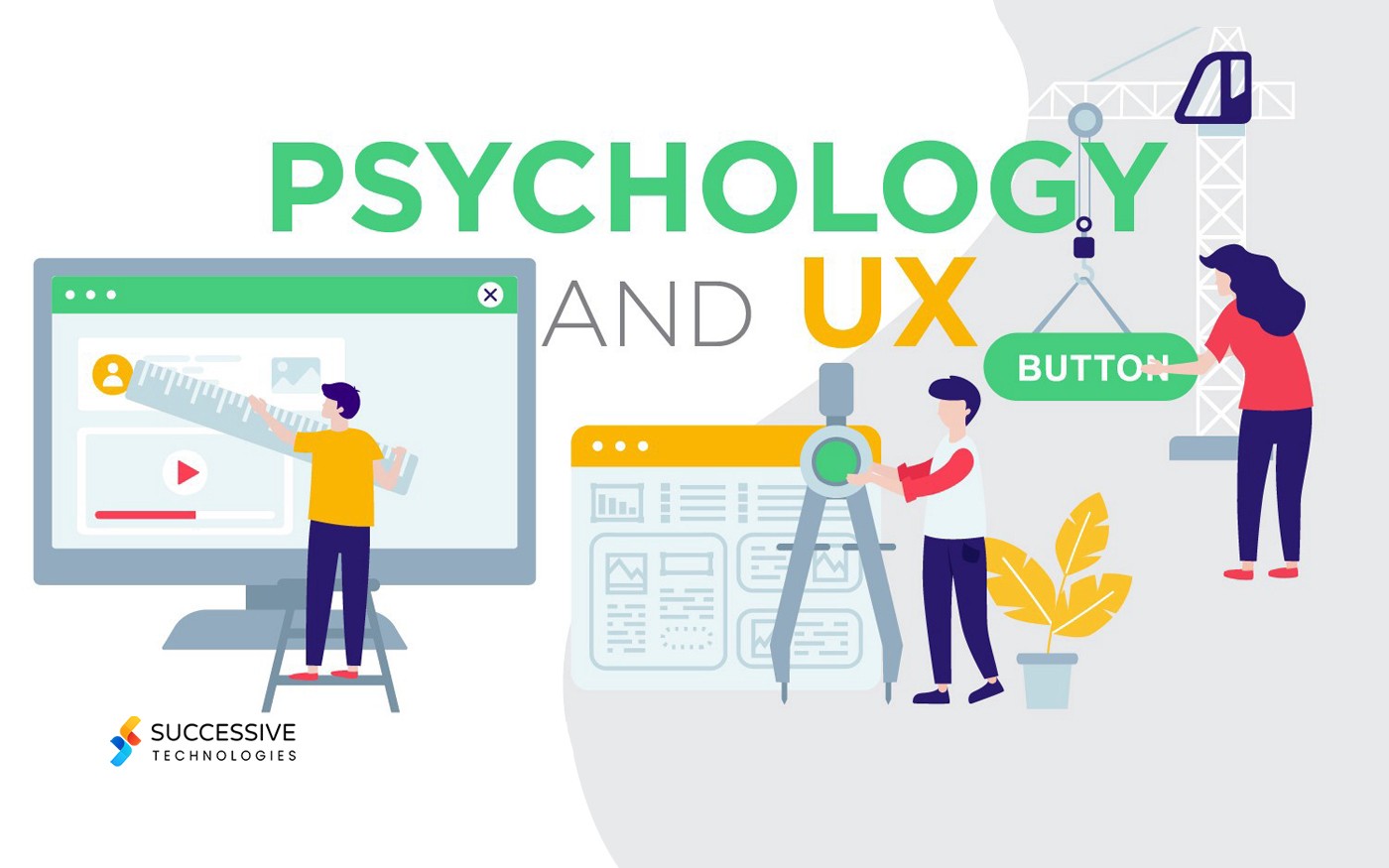In today’s digitally driven marketplace, where the lines between online and offline trade hold to blur, the success of e-commerce hinges on creating immersive and intuitive user-centric e-commerce platform design. At this heart lies the art and technological know-how of User Interface (UI) and User Experience (UX). These disciplines, frequently used interchangeably yet extraordinary in their outcomes, are pivotal in shaping how customers interact with and understand e-commerce platforms.
In the expansive space of enterprise e-commerce, where organizations cater to numerous audiences and navigate complicated transactions, the importance of ui/ux design in enterprise ecommerce cannot be overstated. It is now not simply about imparting merchandise and facilitating transactions; it is about crafting digital environments seamlessly combining functionality with aesthetics, catering to users’ evolving wishes and possibilities.
This blog will explore the multifaceted role that UI/UX design plays in enterprise e-commerce, particularly emphasizing its effect on consumer experience. From using engagement and retention to optimizing conversion rates and fostering brand differentiation, it will discover the significance of UI/UX for enterprise e-commerce and how strategic layout selections can increase e-commerce structures from transactional channels to immersive experiences.

Understanding UI/UX Design for eCommerce
The importance of UI/UX design in enterprise e-commerce encapsulates a multifaceted approach beyond aesthetics. It is about orchestrating an immersive digital journey that seamlessly integrates capability with consumer-centricity, catering to users’ diverse desires and expectancies. In the context of enterprise e-commerce, UI layout revolves around creating visually appealing interfaces that are intuitive to navigate and visually attractive. This entails thoughtful consideration of format, typography, color schemes, and imagery to revive desired feelings and guide customers through the platform easily.
On the other hand, UX layout specializes in the holistic experience of users as they interact with the platform, encompassing usability, accessibility, and emotional resonance. It includes understanding consumer conduct, engaging in research, and iteratively refining the layout to optimize individual satisfaction and drive favored outcomes. From simplifying complicated approaches to expecting user wishes and possibilities, UX design seeks to create frictionless stories that leave a lasting influence on customers.
In the dynamic space of enterprise e-commerce, where competition is fierce and customer expectancies constantly evolve, the impact of UI/UX on enterprise e-commerce success is a strategic differentiator.
Driving Customer Engagement and Retention
In the hyper-competitive arena of enterprise e-commerce, driving customer engagement and fostering long-term retention is paramount for sustainable growth and profitability. UI/UX strategies for enterprise-level online stores perform a pivotal role in attaining these goals by creating seamless, immersive, and exciting experiences that resonate with customers.
Engagement starts the moment a consumer lands on the e-commerce platform. Intuitive navigation, visually attractive product presentations, and customized suggestions captivate customers’ attention, encouraging them to discover more. By knowing consumer alternatives and conduct, UI/UX designers can tailor the shopping experience, making it more relevant and compelling.
Moreover, a well-designed interface instills confidence and acceptance in the brand, fostering a sense of user loyalty. Clear conversation, better pricing, and hassle-free transactions enhance the general user experience, encouraging repeat purchases and word-of-mouth referrals.
Retention, however, extends beyond the initial transaction. Effective UI/UX design encompasses post-buy interactions, such as order monitoring, customer support, and feedback mechanisms. By streamlining these methods and immediately addressing users’ wishes, businesses can construct more robust relationships with customers, encouraging them to return for their subsequent purchases.
Enhancing Brand Perception and Differentiation
Enhancing enterprise e-commerce with UI/UX design is a powerful device in brand perception and differentiation endeavors, allowing brands to convey their specific identity and value proposition through captivating digital experiences. A cohesive visual identification of logos, color palettes, and typography reinforces brand recognition and consistency throughout the e-commerce platform. By aligning design factors with brand values and personality, UI/UX designers evoke emotions and associations, fostering a deeper connection with customers.
Moreover, progressive layout factors and interactive features can set brands aside from the competition, developing memorable experiences that leave a lasting influence on users. Whether through immersive product showcases, gamified shopping experiences, or personalized messaging, strategic UI/UX layouts can differentiate businesses in a saturated marketplace.
E-commerce businesses can establish themselves as industry leaders by continually delivering exquisite user reviews and earning customers’ acceptance and trust. Positive interactions with the e-commerce platform enhance brand perception and contribute to long-time customer relationships and advocacy.
Addressing Accessibility and Inclusivity
In the digital age, ensuring accessibility and inclusivity in enterprise ecommerce platforms is vital and a strategic gain. UI/UX layout is pivotal in addressing those components, making digital experiences handy to users of all abilities and backgrounds. Accessibility user-centric ecommerce platform design includes creating interfaces that can be navigated and understood by people with disabilities, consisting of visible impairments, mobility obstacles, or cognitively demanding situations. This includes functions like alternative text for images, keyboard navigation alternatives, and adjustable font sizes.
By incorporating accessibility capabilities into the layout, businesses can expand their reach and cater to a broader audience of individuals with disabilities, who represent a vast market segment. Moreover, embracing inclusivity in layout demonstrates a dedication to diversity and social responsibility, enhancing the brand’s reputation and enchantment.
Furthermore, the accessible design advantages all customers, not just those with disabilities. Straightforward navigation, concise content, and intuitive interfaces enhance the overall user experience, leading to better engagement and satisfaction.
Conclusion
The importance of UI/UX design for enterprise ecommerce cannot be overstated. Corporations can create immersive digital experiences that drive engagement, foster loyalty, and differentiate their brand in a crowded marketplace by prioritizing innovative design ideas. From optimizing conversion rates and improving brand belief to addressing accessibility and inclusivity, UI/UX layout impacts every factor of the user’s purchasing journey.
Embracing a user-centric approach to e-commerce design results in tangible enterprise effects such as expanded sales and market proportion and cultivates stronger relationships with customers built on trust and pride. As organizations continue to navigate the evolving landscape of e-commerce, investing in UI/UX design will remain paramount in shaping the future of digital trade and sustainable growth in the long run.












